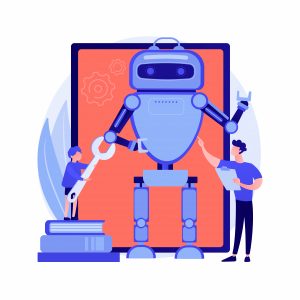
Technological Innovation: The Knight in the Silver Armour!
The late 1990s and the early 2000s have witnessed a tremendous change in our development charts. The need for the nations to develop a solid bilateral relationship with each other has opened up a wide array of opportunities in the global arena. As the unified council of nations has decided against war, the energy got placed to capture the markets of different countries.
For example, Japan, one of the key players in WW-2, has got into the consumer electronics market while the western countries focused on streamlining their primary industries. This set forward the birth of the B2B industries, which is drastically transforming the service sector. At present, it is estimated that the industry is worth nearly $7 trillion. This is expected to reach a whopping $25 trillion in the next few years!
So, what’s pushing these numbers forward? It’s hard to point the finger at one particular thing, but the core of most of these factors is “Innovation”, mainly “Technological innovation“.
The Law of Accelerating Returns
In simple terms, the reason for the drastic technological advancement is that a particular advancement acts as a fuel for the next one.
Digital transformation companies understand this core principle to foresee the market trends. This is one of the most practical explanations for the vast technological innovation. The evolution of smartphones is one fine example of this theory. Once touchscreen was introduced, almost every smartphone in the world adopted it and made it it’s own.

The evolution of the cameras is also one such example. As new hardware and software started popping in the industry, the companies were quick enough to integrate them into their own product. The inverse of this rule is also true! Take Blackberry, for instance. It was one of the leading smartphones of its time, but it resisted the changes that gradually changed the market! At some point, Blackberry became irrelevant to their audience.
Hand-picked Related Content – Role of Digital Transformation in Business Growth
The Power of Digital
The term digital has become almost synonymous with the term technological innovation. Digital ecosystems are drastically changing our lives without making too much noise. Enterprises’ digital ecosystems, in particular, are entirely elevating the employee experience! The incorporation of such a robust digital platform into organizations has opened up a wide range of opportunities for enterprises!

Many consumer electronics brands like Apple, Google, and Amazon are getting into this space to capture this potential market. If you tear down the digital ecosystem strategies, you will find a common goal towards which the whole process operates- automation. Automation is the end goal of a digital ecosystem. Many Sustainability consulting firms are also welcoming the decision to create digital ecosystems to streamline their operations. Many enterprises realize the need to align their business towards sustainable development.
Hand-picked Related Content – Tips for Successful Robotic Process Automation Implementation
To Move Towards Simplicity
The recent tech trends have shown that the market is moving towards an overall simplistic process. Cloud-based solutions are a perfect example of this statement. It didn’t take much time for businesses to understand the potential of the cloud market. Businesses leverage cloud solutions to keep the process minimal and straightforward. It also helps them increase the efficiency of the operations by stripping off any complexities surrounding them.

Cloud computing technologies are a part of an efficient digital ecosystem strategy that helps enterprises to reduce friction. For example, Oracle is a leading cloud service provider that changes the overall employee experience in an organization. The market will continue to move in this direction till it reaches a saturation point. Once it hits that point, it evolves into a new form of technology.
How Does the Future Look?
People have been trying to predict the tech wave for a long time now! And, honestly, predicting the behavior of something that’s this vast and generic is a hectic task. To predict a definite thing is comparatively easy! And from there, we can build our case relatively quickly. For example, Moore’s law says that the number of transistors on a computer doubles every year. If the number of transistors is increasing, the space for transistors has increased, or the existing size of the transistors got reduced in half!
From these conclusions, we can say that in the next 5 years, the computing power will be at least 32 times higher than the present value. But this doesn’t have to be necessarily true. Suppose a new wave of innovation made transistors obsolete, then this conclusion could change.

Ray Kurzweil, one of the most influential futurists, is known for the predictions he has made in the last few years! To our surprise, almost 86% of his predictions came true. One of his famous predictions was that by the late 1990s, a computer could beat a grandmaster in chess, and guess what! IBM’s system did that exactly like his prediction! He uses the law of accelerating returns to identify the pattern shift, and it has worked most of the time!
Predictions should be taken with a pinch of salt. When we make decisions based on unscientific predictions, we bear more risk to our operations. Hence, we should try to approach these predictions from a data-centric approach.
Wrapping this up
So, who is responsible for this change? We often fail to recognize the people responsible for this change, but we can say that tech enthusiasts around the globe are the ones that are making such innovations possible. Innovation in Bespoke software development has cracked open a variety of opportunities, creating sub-sectors and industries. To envision a change is the hardest thing to do! But, innovation is not pulled out of thin air! It happens because it can evolve beyond that, even when the users are content with its existing state. It exists for a reason.
